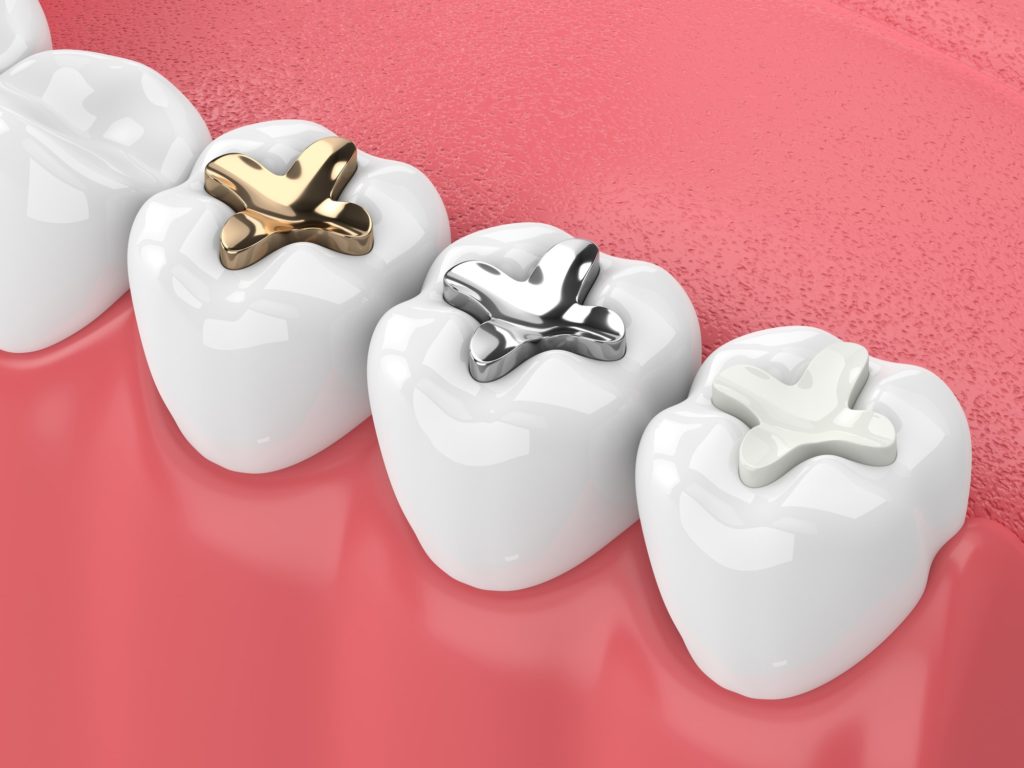Fillings and Sealants
Tooth decay and cavities are common dental issues. Receiving a tooth-colored filling to restore your tooth helps prevents the problem from developing into something worse.
Tooth Fillings and Sealants
A dental sealant is a preventative treatment that lowers the chances of developing cavities in the deep chewing surfaces of your back teeth. Since these grooves, pits, and fissures are narrow and difficult to clean with a toothbrush, they’re some of the areas that develop cavities first.
By placing sealants over your chewing surfaces, we essentially create a shallower area that’s smoother and easier to clean with a toothbrush. That way there’s little to no residual bacteria left inside of the grooves following your typical brushing routine.

-
How do cavity fillings work?
Cavity and tooth fillings are required because of the deterioration of holes left in the tooth due to tooth decay. Left unchecked, the decay will continue to spread and damage the tooth. During the filling procedure, dentists clean away the decay inside the cavity, usually with a drill to prevent further damage. But this doesn’t fix the damage that has already been created, so a filling is necessary. The intent of the filling is to replace the part of the tooth that is missing or destroyed by tooth decay. The dentist molds the filling to match the shape of the surrounding tooth, which restores the strength and integrity of the tooth and prevents further decay from happening.
-
How long does a dental sealant last?
Dental sealants have been used and proven to be effective since the 1970s. They are mainly placed on chewing surfaces and are effective in preventing tooth decay. Their lifespan can vary, but many last years—and it is possible to place a new sealant on a tooth if the sealant wears off. It is important to note that sealants only protect the surface of the tooth they are placed on. Using fluoride and other preventative cleaning practices will still help protect all the surfaces of the tooth from decay and cavities.
-
What types of filling materials are available?
There are several types of materials available that are used for fillings, which include gold, porcelain, silver amalgam (which consists of mercury mixed with silver, tin, zinc and copper), tooth-colored plastic and composite resin fillings. There is also a material that contains glass particles and is known as glass ionomer. This material is used in ways similar to the use of composite resin fillings. Which type is used depends on your dentist, the extent and location of your tooth decay, and sometimes, your insurance coverage.
-
Who qualifies for dental sealants?
Sealants are designed for healthy teeth that have yet to develop cavities. In most cases, they’re placed on permanent molars shortly after they come in (around the ages of 6 and 12, respectively). However, adults can choose to get sealants too. It may be that their childhood sealants came off or they’re starting to develop cavities in other teeth for the first time.
Investing in affordable dental sealants can help you prevent more extensive (and expensive) oral health treatments in the future.
A Kid-Friendly Dental Experience
We specialize in providing first-class dental care to children of all ages. What’s more, we are parents too! Therefore, we understand the busy lives of families and have created an experience to make your dental visits simpler. Learn more about our services or schedule an appointment today.

